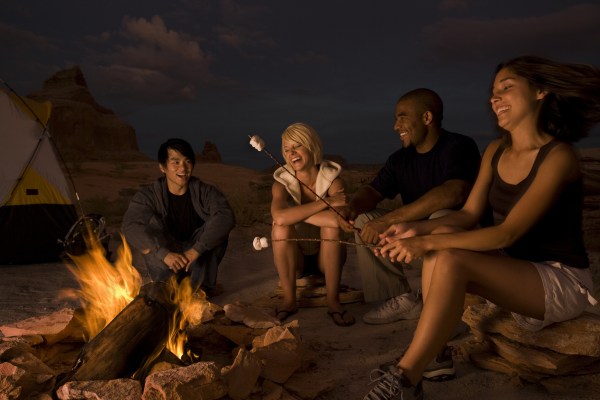After years of sustained growth, the pandemic supercharged the outdoor recreation industry. Startups that provide services like camper vans, private campsites and trail-finding apps became relevant to millions of new users when COVID-19 shut down indoor recreation, building on an existing boom in outdoor recreation.
Startups like Outdoorsy, AllTrails, Cabana, Hipcamp, Kibbo and Lowergear Outdoors have seen significant growth, but to keep it going, consumers who discovered a fondness for the great outdoors during the pandemic must turn it into a lifelong interest.
Outdoorsy, AllTrails, Cabana, Hipcamp, Kibbo and Lowergear Outdoors have seen significant growth, but to keep it going, consumers who discovered a fondness for the great outdoors during the pandemic must turn it into a lifelong interest.
Social media, increased environmentalism and high urbanization were already fueling a boom in popularity. There was a 72% increase in people who camp more than three times a year between 2014 and 2019, mostly spurred by young millennials, young families with kids and nonwhite participants.
But 2020 was a different animal: After months of shelter-in-place orders, widespread shutdowns and physical distancing, outdoors became the only location for safe socializing. In South Dakota, the Lewis and Clark Recreation Area saw a 59% increase in visitors from 2019 to 2020. In the pandemic year, consumers spent $887 billion on outdoor recreation according to the Outdoor Industry Association, more than pharmaceuticals and fuel combined.
And it’s going to continue to grow. Hiking equipment alone is supposed to reach a $7.4 billion market size by 2027, a 6.3% compound annual growth rate. Camping and caravanning is having an even more drastic moment. Without international travel, vacations shifted from flights to exotic resorts to domestic road trips, self-contained rentals and camping. In 2020, the market for camping and caravanning was almost $40 billion and is predicted to rise 13% to just over $45 billion this year.
After the initial and extreme drop-off in engagement early as national parks closed, private camping sites shut down and domestic travel ceased, many outdoor startups have had a breakout year. Outdoorsy, the peer-to-peer camper van rental marketplace, said it saw 44% of all bookings in the company’s history in 2020.
Campsite booking platform Hipcamp said it sent three times as much money to landowners in 2020 as compared to 2019. And it’s not just experienced outdoor veterans taking advantage of the work-from-home lifestyle: in 2020, Cabana, a camper van rental startup, said 70% of its customers had never rented a camper van or an RV before and another 26% had only done it once.
But a report commissioned by the Outdoor Industry Association showed that the most popular outdoor activities were ones that people could do close to home, not the traveling kind Hipcamp, Cabana and Outdoorsy traffic in. The three most popular outdoor activities for newbies: walking, running and bicycling.
But the pandemic did create a small boost for camping, climbing, backpacking and kayaking; fueled by an increase in women, younger, more ethnically diverse, urban and slightly less wealthy people pushing into the outdoors. This class of outdoor startups will need to engage the new demographic shift to capitalize on the pandemic’s outdoor boom because, according to the report, a quarter of those who started new outdoor activities during the pandemic don’t plan on continuing once it’s over.
Startups are increasing accessibility to the outdoors
But getting into the outdoors can be overwhelming: there’s gear to buy, skills to learn, exploring unfamiliar areas and the added stressor of safety. Outdoor startups are working to lower the barrier to entry to help grow their businesses.
“I think anytime you have like 2,000 articles with two dozen tips on how to use a product, that tells me that it is really, really too hard to use,” said Cabana founder Scott Kubly. “To me, that says there’s nothing but friction in this process. If you want to build something that’s mainstream, you need to make it super consistent and really easy to use.”
Kubly said only half a percent of the U.S. population takes a rental van or RV trip each year. Planning an outdoor adventure can be time-consuming — choosing a location, finding an open campsite, planning meals and water, and figuring out dump stations for trash or septic. That planning is multiplied tenfold if you are going for a road trip or backpacking and need to find new places every other night.


Recent Comments